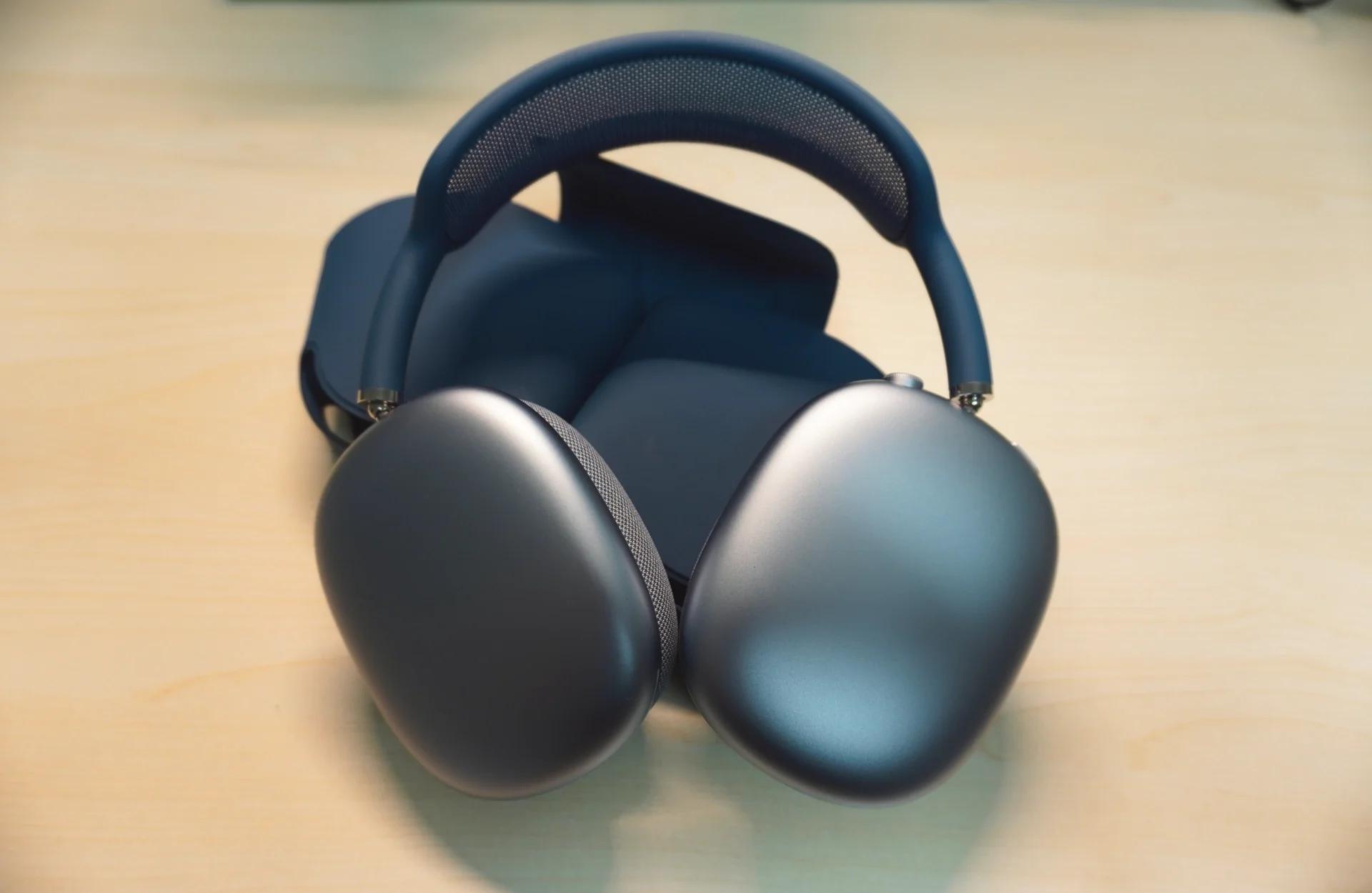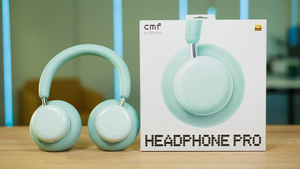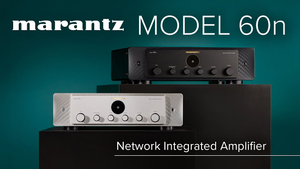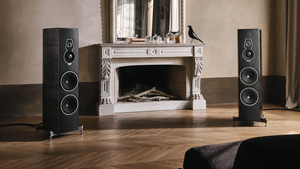
AirPods Max: The Audiophile's Verdict
I. Overture: The Inevitable Arrival
When a titan of industry turns its gaze upon a new domain, the world watches with a mixture of anticipation and trepidation. Apple's entry into the premium over-ear headphone market was not merely a product launch; it was a declaration. Greeted by immense expectations born from the company's storied history of disrupting established categories, the AirPods Max also faced a wall of skepticism from the audiophile community. The audacious price point of $549 at launch immediately pitted it not against the usual consumer electronics, but against the hallowed names of high-fidelity audio. This set the stage for a fundamental conflict, a contest between Apple's unparalleled mastery of industrial design, user experience, and computational power, and the deeply entrenched heritage of dedicated audio brands that have spent decades perfecting the art of sound reproduction.
This review, therefore, is guided by a central question that resonates with every discerning listener: Do the AirPods Max redefine the premium headphone category by forging a new paradigm where the holistic experience and ecosystem integration are paramount? Or do they ultimately stand as a beautifully engineered but sonically outmatched "lifestyle" accessory, a luxurious indulgence for the Apple faithful, yet one that is ultimately surpassed in pure audio fidelity by its more specialized rivals?. The answer lies not in a simple binary but in a nuanced understanding of what Apple has truly built. The evidence suggests that Apple's strategy was not to achieve singular dominance in any one metric—be it sound, noise cancellation, or battery life—but rather to introduce a new proposition of "holistic luxury." This is a category where the total user experience, from the satisfying heft of the aluminum earcups to the magical, instantaneous switching between devices, constitutes the core product. This approach fundamentally challenges the traditional audiophile value system, which has long held sonic performance as the preeminent, and often sole, criterion for greatness. While competitors may excel in specific areas—Bose in noise cancellation, Sennheiser in endurance, or Bowers & Wilkins in hi-fi purity—the AirPods Max present their value as the seamless sum of their parts, an argument that must be carefully dissected to determine its merit.

II. The Object of Desire: Design, Craftsmanship, and Ergonomics
Industrial Design Philosophy
The AirPods Max are, first and foremost, an object of meticulous industrial design. Apple's choice of anodized aluminum for the earcups and a stainless steel frame represents a deliberate and stark departure from the plastic-dominated construction of key competitors like Sony and Bose. This is not a decision born of necessity, but of philosophy. It positions the headphones as a durable, premium artifact intended to be admired as much as used, imbuing them with a sense of permanence that is often absent in the category. They are designed to feel substantial, to communicate quality through tactility and weight.
Materials and Build Quality
Across a wide spectrum of critical evaluations, there is a near-universal consensus that the quality of the materials and the precision of the build are exceptional, feeling "best in class" and largely justifying the lofty price tag. The fit and finish are flawless, with every component moving with a smooth, engineered tolerance. However, this commitment to premium materials is not without its practical trade-offs. The soft, anodized aluminum, while beautiful to the touch, is susceptible to scuffing and scratching, a particularly notable issue given that the earcups can knock against each other when handled. This small detail underscores a design that prioritizes aesthetic purity, perhaps at the expense of real-world resilience.
Ergonomics and Comfort: The Weight Paradox
The most significant consequence of Apple's material choice is weight. At 385 grams, the AirPods Max are considerably heavier than their main rivals, weighing over 130 grams more than some Sony models and 85 grams more than the luxurious Bowers & Wilkins Px7 S2. This substantial mass presents a formidable ergonomic challenge, one that Apple has addressed with a truly innovative solution: the mesh canopy headband. Widely praised by critics as a "paradigm shift," this unique design effectively distributes the weight across the crown of the head, masterfully mitigating the formation of pressure points that would otherwise make long listening sessions unbearable. The memory foam earpads, which are magnetically attached and easily replaceable, are spacious and create a gentle yet effective seal around the ears.
However, physics cannot be entirely defied. Despite the headband's brilliance, the sheer mass of the headphones remains a palpable presence. While many users report no discomfort even after hours of use, others find that the weight and a relatively firm clamping force can lead to fatigue or pressure around the jaw over time. This "weight paradox"—an exceptionally heavy design made surprisingly comfortable through clever engineering—remains a key point of division and a clear disadvantage against lighter, more effortlessly wearable competitors.

Controls and Tactility: The Digital Crown
In an era of often-finicky and unreliable touch controls, Apple's implementation of the Digital Crown, borrowed from the Apple Watch, is a triumph of tactile, intuitive design. This precision-engineered dial provides satisfying physical feedback for adjusting volume and managing playback (with single, double, and triple presses), offering a solution that is both elegant and unerringly reliable. It is a joy to use. The only minor critique is its low resistance and placement, which can occasionally lead to accidental and significant volume adjustments when handling or adjusting the headphones on the head.

The Infamous "Smart Case"
No discussion of the AirPods Max's design is complete without addressing its most controversial element: the "Smart Case." Described almost universally as "near-pointless," "silly," and sarcastically as a "brassiere," the case offers virtually no protection against drops, scratches, or the rigors of travel. Its primary function is to place the headphones into an ultra-low power state, a task that could have been accomplished with a simple power button. This design choice is baffling, standing in stark contrast to the robust, protective hard-shell cases provided as standard by every major competitor. It reinforces a perception that the AirPods Max were not designed with the traditional road-warrior commuter in mind, but for a more curated, careful pattern of use between protected environments like the home and office. The impracticality is so pronounced that it feels less like a flaw and more like a deliberate statement about the product's intended lifestyle—one that prioritizes form over the function of portability.
III. The Apple Doctrine: Ecosystem, Intelligence, and Experience
Seamless Integration
The true "magic" of the AirPods Max is unlocked only within the Apple ecosystem. Powered by dual H1 chips, the user experience for those with an iPhone, iPad, or Mac is nothing short of sublime. Pairing is instantaneous, and the ability to automatically and intelligently switch audio between these devices is a seamless and fluid process that competitors have yet to replicate. It is this deep, frictionless integration that forms a core part of the product's value proposition. For users outside this walled garden, the AirPods Max function merely as a standard, albeit very high-quality, Bluetooth headphone, stripped of the intelligent features that justify a significant portion of their premium.

Active Noise Cancellation (ANC): Natural and Effective
Apple's implementation of Active Noise Cancellation is superb. It is both highly effective and remarkably natural, adeptly filtering out the constant drone of airplane cabins and train carriages without creating the sense of uncomfortable "eardrum suck" or pressure that can plague some ANC systems. While a consensus of reviews places the absolute pinnacle of noise-cancelling performance with Bose's QuietComfort Ultra, the AirPods Max are firmly in the top tier, holding their own against Sony and offering a powerful and pleasant cone of silence.
Transparency Mode: The Uncontested Champion
Where Apple's computational audio prowess is undeniably and utterly dominant is in its Transparency Mode. It is, without exaggeration, the best in the industry. Activating the mode provides a window to the outside world that is so clear, natural, and lag-free that it often feels as though one is not wearing headphones at all. Ambient sounds are reproduced with stunning fidelity, allowing for easy conversation and situational awareness. This feature is a technical marvel and a key differentiator that no competitor has managed to match.
Spatial Audio: Cinematic Triumph, Musical Debate
Spatial Audio, Apple's take on virtual surround sound, is a feature of two distinct halves. When paired with video content, particularly movies and shows encoded with Dolby Atmos, the experience is transformative. The dynamic head-tracking creates a stable and immersive sound field that convincingly mimics a multi-speaker cinema setup, anchoring the audio to the screen even as you turn your head. It is a hugely appealing and genuinely impressive feature for media consumption.
For music, however, its success is more debatable. While the technology is intriguing and can add a sense of space to some recordings, the effect can also feel artificial or gimmicky, altering the artist's original stereo mix in ways that are not always beneficial. Its effectiveness is highly dependent on the quality of the spatial mix and the listener's personal taste, making it more of a novel option than an essential listening mode for music purists.

Connectivity and Battery Life
From a technical standpoint, the AirPods Max's connectivity is a point of contention for audiophiles. They rely on Bluetooth 5.0 and support only the standard SBC and AAC codecs. The absence of high-bitrate codecs like Qualcomm's aptX suite or Sony's LDAC is a significant omission, particularly for Android users who cannot leverage the high-quality AAC implementation found on Apple devices. For purists, the introduction of wired lossless audio playback (up to 24-bit/48kHz) via a USB-C to USB-C cable on the latest models is a welcome, if tethered, addition. It is crucial to note that the older, optional Lightning to 3.5mm audio cable is not a true lossless solution, as it involves an analog-to-digital conversion within the cable itself.
The most unequivocal weakness of the AirPods Max is its battery life. Apple quotes approximately 20 hours of listening time with ANC enabled. This figure, while adequate for a full day's use, falls dramatically short of the competition. It is significantly less than the 30 hours offered by the Sony WH-1000XM5 and Bowers & Wilkins Px8, and is dwarfed by the astonishing 60-hour marathon endurance of the Sennheiser Momentum 4. This disparity places a greater charging burden on the user and is a major practical disadvantage.
IV. The Sonic Signature: A Critical Listening Session
Overall Tonality and Character
Divorced from their ecosystem and judged on sound alone, the AirPods Max present a sonic signature that is impressively musical, detailed, and spacious. The tuning is mature and refined, avoiding the exaggerated, bloated bass that plagues many mainstream consumer headphones. The overall balance is natural and engaging, earning praise even from critical audiophile reviewers as being "very well-tuned". The frequency response is best described as a gentle "U-shape." Unlike the more aggressive "V-shape" that carves out the midrange, the AirPods Max feature a more focused emphasis on the extremities: the deep sub-bass and the airy upper treble, preserving a clear and present midrange.
This pleasing tonality is not merely the result of the 40mm dynamic driver, but a testament to Apple's computational audio engine. The onboard H1 chips continuously run an Adaptive EQ, which measures the sound signal being delivered to the user's ear and adjusts the low and mid-frequencies in real-time to account for variations in fit and seal caused by hair, glasses, or head movement. This results in a remarkably consistent and well-balanced sound for every user under almost any condition. However, this reliance on digital signal processing (DSP) to achieve its character is a philosophical departure from the traditional audiophile ideal, where a superior sound is the product of a mechanically and acoustically excellent transducer that requires minimal digital intervention. This may explain why the AirPods Max sound exceptionally well-tuned, but may not resolve detail with the same level of purity as some high-end, acoustically-driven competitors.

Low Frequencies (Bass): Rumble Over Punch
The bass response is a decided strength of the AirPods Max. The tuning prioritizes deep, subterranean sub-bass extension over punchy, aggressive mid-bass impact. The result is a low end that can be described as having more "rumble" and "growl" than "boom" or "slam". This control is exemplary; the bass is tight and articulate, providing a solid foundation to the music without ever bleeding into or muddying the midrange frequencies. This clean separation allows basslines to remain distinct and textured, a hallmark of sophisticated tuning.
Midrange: Clarity and Controversy
The midrange performance is generally characterized by clarity and presence, allowing vocals and core instruments to come through distinctly. However, more technical analyses and measurements reveal a subtle but notable dip in the upper-midrange, typically in the 2kHz to 6kHz region. This slight recession can gently soften the "bite" and attack of vocals and instruments like electric guitars and snares, preventing them from sounding overly forward or aggressive. While this contributes to a smooth, non-fatiguing listening experience, some critics argue it can also rob the music of some of its immediacy and energy.

High Frequencies (Treble): Detail and Spice
The treble is perhaps the most divisive aspect of the AirPods Max's sound signature. It is extended and detailed, providing a sense of air and sparkle that serves as an effective counterbalance to the weighty sub-bass. However, for listeners sensitive to high frequencies, this region can cross a fine line into sharpness or sibilance. Multiple reviews note a certain "spiciness" or an unrefined "sharp edge" to the upper frequencies that can be distracting on some recordings. This quality makes the treble response a potential deal-breaker, highly dependent on individual hearing sensitivity and taste.
Technical Performance: The Audiophile's Sticking Point
When evaluated on pure technical merit—the quantifiable metrics of audio reproduction—the AirPods Max are generally considered good, but not exceptional for their price. While their overall tuning is lauded, their technicalities, such as resolution (the ability to retrieve micro-details) and imaging (the precision of spatial placement of sounds), are often rated as "slightly above average" or simply "acceptable" for a premium closed-back headphone. They create a wide and immersive soundstage, but they do not compete with the surgical precision or raw detail retrieval of dedicated, high-end wired audiophile headphones, a crucial point of context for the discerning enthusiast.

V. The Gauntlet: A Comparative Analysis with Market Titans
In the fiercely contested arena of premium wireless ANC headphones, there is no single, undisputed champion. Instead, there exists a pantheon of specialized titans, each excelling in a particular domain. The "best" headphone is not an absolute but a relative title, wholly dependent on the priorities of the individual user. This analysis will dissect the AirPods Max's standing against its four most formidable rivals to determine for whom each product is truly the ideal choice.
Table 1: The Titans at a Glance
| Model | MSRP (USD) | Weight (g) | Battery Life (ANC On, hrs) | Key Codecs | Defining Feature |
| Apple AirPods Max | $549 | 385 | 20 | AAC, SBC | Ecosystem Integration & Premium Build |
| Sony WH-1000XM5 | $399 | 254 | 30 | SBC, AAC, LDAC | Feature Customization & Call Quality |
| Bose QuietComfort Ultra | $429 | 250 | 24 | SBC, AAC, aptX Adaptive | Class-Leading Noise Cancellation |
| Sennheiser Momentum 4 | $379 | 293 | 60 | SBC, AAC, aptX, aptX HD, aptX Adaptive | Battery Life & Sound Quality for Value |
| Bowers & Wilkins Px8 | $699 | 320 | 30 | SBC, AAC, aptX, aptX HD, aptX Adaptive | Audiophile-Grade Sound & Luxury Materials |

V.A. The Technologist: vs. Sony WH-1000XM5
Sound: The Sony WH-1000XM5 offers a sound signature that is quintessentially "consumer-friendly" out of the box, with a prominent bass boost that can sound fun but also muddy and bloated to a critical ear. Its true potential is unlocked through the companion app's equalizer, which allows for significant correction to achieve a more balanced and detailed presentation. In contrast, the AirPods Max deliver a more natural, musically cohesive sound from the moment you put them on, requiring no user intervention. While a well-EQ'd XM5 might rival the Max for clarity, the Apple product offers a superior out-of-the-box audiophile experience.
ANC & Features: Sony's noise cancellation is in the top echelon, performing at a level very close to that of the AirPods Max. Where Sony pulls ahead decisively is in its feature set and customization. The Headphones Connect app is a powerhouse, offering granular EQ control, adjustable ambient sound levels, and intelligent features like Speak-to-Chat. Furthermore, the XM5 is widely regarded as having the best microphone quality in the class, making it the superior choice for voice calls and virtual meetings.
Build & Comfort: Here lies the most significant philosophical difference. The XM5's all-plastic construction, while high-quality, feels palpably less premium than the metal-and-fabric build of the AirPods Max. However, this choice makes the Sony headphones significantly lighter (254g vs. 385g), which for many users translates to superior long-term comfort. A critical consideration for the XM5 is the widely reported issue of hinge fragility, a long-term durability concern that does not appear to affect the robustly built AirPods Max.
Verdict vs. Sony: The AirPods Max are for the user deeply invested in the Apple ecosystem who values impeccable build quality, premium materials, and a superb, balanced sound that requires no tinkering. The Sony WH-1000XM5 are for the feature-focused power user and tinkerer who demands the absolute best call quality and deep software customization, and is willing to accept a plastic build with potential long-term durability questions in exchange for a lower price and lighter weight.

V.B. The Comfort King: vs. Bose QuietComfort Ultra
Sound: The Bose QuietComfort Ultra delivers a powerful, dynamic, and punchy sound signature with a forward and full-bodied bass response. It is an exciting and engaging listen, though, like the Sony, its default tuning can be overly bass-heavy for audio purists and benefits from the app's limited EQ adjustments. The sound of the AirPods Max is comparatively more neutral, spacious, and less overtly dramatic, aiming for a more natural reproduction.
ANC & Features: This is the domain where Bose reigns supreme. The QuietComfort Ultra consistently earns the title of the best active noise cancellation on the market. It creates a more profound and encompassing silence than any competitor, including the AirPods Max, making it the undisputed champion for those who need to block out the world. Bose's Immersive Audio is its answer to Spatial Audio, but it is generally considered less convincing and more of a mixed bag than Apple's implementation.
Build & Comfort: The QC Ultra is a masterclass in ergonomic design. It is exceptionally lightweight (250g) and supremely comfortable, with a well-judged clamping force and plush earpads that make it arguably the most comfortable headphone in its class for all-day, uninterrupted wear. The build incorporates high-quality plastics and metal yokes, but it does not exude the same dense, luxurious, and object-like quality as the AirPods Max.
Verdict vs. Bose: The choice here is defined by one's primary use case. For the frequent flyer, the long-distance commuter, or any user for whom absolute maximum noise cancellation and all-day wearability are the highest priorities, the Bose QuietComfort Ultra is the unequivocal and superior choice. For the user who prioritizes a more premium-feeling object, a more balanced default sound signature, and the industry-leading Transparency Mode, the AirPods Max remains a powerful contender.

V.C. The Marathon Runner: vs. Sennheiser Momentum 4
Sound: The Sennheiser Momentum 4 is frequently lauded by audiophile critics as offering the best pure sound quality in its price bracket, and it presents a formidable challenge to headphones costing significantly more. It delivers a detailed, dynamic, and enjoyable sound with a satisfying bass presence that is well-controlled and can be finely tuned via a robust companion app. On sheer sonic merit, many would argue it equals or even surpasses the AirPods Max.
ANC & Features: The Momentum 4's noise cancellation is very effective, capably silencing most ambient noise, but it is generally considered a small step behind the absolute class leaders from Apple, Bose, and Sony. Its truly game-changing feature is its battery life. At a staggering 60 hours on a single charge with ANC active, it offers three times the endurance of the AirPods Max. This is not just an incremental improvement; it fundamentally alters the user's relationship with charging, transforming it from a daily or bi-daily chore into a weekly or bi-weekly afterthought.
Build & Comfort: The Momentum 4 adopts a more minimalist, plastic-forward design that some find understated or even bland compared to the iconic look of previous Momentum generations, and it certainly lacks the premium, metallic feel of the AirPods Max. However, this design makes it lightweight (293g) and extremely comfortable for long listening sessions.
Verdict vs. Sennheiser: For the value-conscious audiophile who places sound quality and battery life at the absolute top of their priority list, the Sennheiser Momentum 4 represents an almost unbeatable proposition. It offers flagship-level sound and industry-annihilating endurance for a lower price. The AirPods Max justifies its significant price premium through its far more luxurious build materials, slightly superior noise cancellation, and the invaluable, magical integration within the Apple ecosystem.

V.D. The Connoisseur: vs. Bowers & Wilkins Px8
Sound: The Bowers & Wilkins Px8 is unabashedly positioned as the connoisseur's choice in the wireless headphone market. It is engineered for hi-fi sound above all else. Reviews consistently praise its outstanding clarity, precision, detail retrieval, and fast, punchy dynamics, describing its performance as a clear step ahead of most alternatives. In a direct comparison, the Px8's sound is often described as more insightful and analytical, which can make the AirPods Max sound relatively "thin" by contrast.
ANC & Features: The Px8's noise cancellation is effective for general use but is not in the same elite tier as that of Apple, Bose, or Sony. B&W's focus is on audio purity; this is reflected in their use of reliable physical buttons over touch controls and their support for high-quality codecs like aptX Adaptive, catering to Android users and audio enthusiasts.
Build & Comfort: This is a contest between two different expressions of luxury. The Px8 employs exquisite Nappa leather and cast aluminum arms, creating a timeless, classic aesthetic that is every bit as premium as the modern, industrial design of the AirPods Max. Crucially, the Px8 achieves this luxurious feel while being significantly lighter than the AirPods Max (320g vs. 385g), giving it a distinct advantage in potential long-term comfort.
Verdict vs. B&W: The Bowers & Wilkins Px8 is for the traditional audiophile who has migrated to the convenience of wireless but is unwilling to compromise on sound quality. They are for the listener who wants the best possible audio fidelity from a Bluetooth headphone and is willing to trade cutting-edge smart features and top-tier ANC to achieve it. The AirPods Max, by contrast, is for the modern tech enthusiast who seeks a masterful balance of very good sound with best-in-class smart features, seamless ecosystem integration, and a design philosophy that is uniquely and unmistakably Apple.

VI. Final Cadence: The Verdict
The Apple AirPods Max are a product of profound and fascinating duality. They are a triumph of industrial design, a masterclass in user experience, and a showcase for the power of computational audio. Simultaneously, in the traditional metrics that have long defined this category, they are not the absolute best. Their battery life is lacking, their sonic technicalities are merely very good rather than class-leading, and their case is an exercise in form over function. To declare them a simple success or failure would be to miss the point entirely.
The final verdict on the AirPods Max is therefore not a universal recommendation, but a specific one. These headphones are not for the spec-sheet warrior, the battery-life absolutist, or the audio purist who believes all digital processing is anathema. Instead, the ideal AirPods Max owner is a specific individual: one who is deeply embedded within the Apple ecosystem, who values the tangible pleasure of premium materials and meticulous craftsmanship as highly as acoustic performance, and who places a supreme premium on a seamless, intuitive, and "magical" user experience. For this user, the flawless device switching, the unparalleled Transparency Mode, and the cinematic wonder of Spatial Audio coalesce into a value proposition that transcends a simple comparison of features. The whole is, in this case, truly greater than the sum of its parts.
While the AirPods Max may not win a head-to-head battle on pure noise cancellation against the Bose QuietComfort Ultra, nor on raw audio fidelity against the Bowers & Wilkins Px8, they succeed brilliantly in forging a new and compelling category of their own. They are the ultimate expression of Apple's holistic product philosophy. They are not merely a device for listening to music; they are an intelligent, luxurious, and deeply integrated audio experience. For the right user, in the right ecosystem, they are worth every penny of their considerable price.






Comments